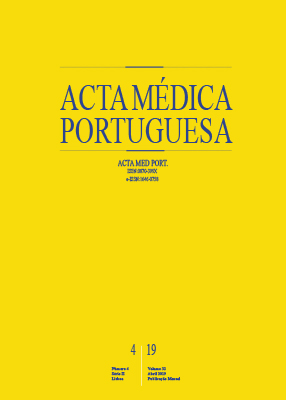Pharmacoeconomic Aspects of Low Back Pain Treatment: Cost of Illness Study in the Republic of Serbia
DOI:
https://doi.org/10.20344/amp.10910Keywords:
Cost-Benefit Analysis, Economics, Pharmaceutical, Low Back Pain/drug therapy, Low Back Pain/economics, Republic of SerbiaAbstract
Introduction: Chronic diseases with disabilities have a huge pharmacoeconomic impact on the health budget, especially in countries with recent history of social and economic transition. The aim of this study was to identify total costs of treating patients with lumbar pain in medical facilities in the central part of the Republic of Serbia.
Material and Methods: This study was designed as a cost of illness study, using a bottom-up approach and it was conducted from a societal perspective. This study included 97 patients with lumbar syndrome who were treated in outpatient facilities in the Central part of Serbia.
Results: Total costs of treating lumbar pain were about €200.40 ± €86.65 per patient per year, where the largest volume of direct costs were costs due to visits to specialists in primary health care institutions (€9.39 ± €6.66). Total indirect costs were €182.00 ± €78.66.
Discussion: Our findings highlight the need to estimate the total costs of treating lumbar pain and evaluate the correlation between costs and other variables for larger population of these patients.
Conclusion: This study distinguished two important pharmacoeconomic aspects of treating lumbar pain. Firstly, indirect costs represent major part of total costs of treating lumbar syndrome. Secondly, differences in valuing medical services between countries with recent history of social and economic transition and countries within European Union are one of crucial reasons for difference in total costs of treating low back pain among patients in neighboring regions.
Downloads
Downloads
Published
How to Cite
Issue
Section
License
All the articles published in the AMP are open access and comply with the requirements of funding agencies or academic institutions. The AMP is governed by the terms of the Creative Commons ‘Attribution – Non-Commercial Use - (CC-BY-NC)’ license, regarding the use by third parties.
It is the author’s responsibility to obtain approval for the reproduction of figures, tables, etc. from other publications.
Upon acceptance of an article for publication, the authors will be asked to complete the ICMJE “Copyright Liability and Copyright Sharing Statement “(http://www.actamedicaportuguesa.com/info/AMP-NormasPublicacao.pdf) and the “Declaration of Potential Conflicts of Interest” (http:// www.icmje.org/conflicts-of-interest). An e-mail will be sent to the corresponding author to acknowledge receipt of the manuscript.
After publication, the authors are authorised to make their articles available in repositories of their institutions of origin, as long as they always mention where they were published and according to the Creative Commons license.









